Back in July, it was reported that Melbourne’s water storages could dry-up as the combination of climate change meets rapid immigration-fuelled population growth:
Melbourne could begin to experience chronic water shortages within about a decade, even if the desalination plant is cranked up to its full capacity, as climate change and population growth rapidly deplete the city’s dams…
Demand for water in and around Melbourne could grow by about 75 per cent in the next 40 years, while flows into the state’s catchments could decrease by more than 40 per cent, according to projections published this month by City West Water, Yarra Valley Water and South East Water…
Last month, Ian Wright – senior lecturer in environmental science at the University of Western Sydney – warned that Australia’s cities will have to turn to costly technical solutions (read desalination plants) to avoid running out of water. From The Conversation:
The increasing thirst of Australia’s biggest cities routinely exceeds our capacity to rely on rainfall for drinking water. Australia is facing a fast-approaching “perfect storm” of growing urban populations and declining rainfall to supply storage reservoirs.
Despite these challenges, our capital cities’ rapid population growth is forecast to continue in coming decades. Sydney, for example, is expected to grow by 1.6 million people in 20 years, but is predicted to be overtaken by Melbourne as the nation’s largest city by then.
How is Australia going to ensure the swelling urban population has enough water? The last two decades provide some important clues…
Desalination and groundwater have come to the rescue…
All of the mainland states have built huge desalination plants, but these come with huge price tags. The Melbourne plant cost about A$4 billion. Operational costs are enormous, even if the plants sit idle…
Desalination also uses enormous quantities of electricity to extract fresh water from salt water. During his time as NSW premier, Bob Carr referred to desalination as “bottled electricity”. This is important to consider given the power crisis facing eastern Australia…
Today, The Australian reports that household water bills will double in line with energy bills because of population growth and climate change – hitting more than $2500 a year by 2040:
In a report to be released today, Infrastructure Australia… [claims] consumer prices will go the way of energy bills and place a significant cost-of-living burden on households. Modelling in the report forecasts that a typical residential water and sewerage bill “could rise by around $600 in today’s money over the next 10 years”. This would result in average bills increasing from $1226 to $1827 in 2027. By 2040, the modelling shows the average would reach as high as $2553. This would represent more than a doubling in real terms.
“For many families, growth in bills of this scale could cause significant hardship”…
The report says that a failure to factor in urban population growth, ageing infrastructure and climate change impacts on supply would expose consumers to price shock risks. It says the millennium drought “exposed a number of vulnerabilities of the sector, and led to over $11 billion of investment (in today’s dollars) to augment supply through desalination plants”.
Many of the decisions were to invest in desalination, but the report says this was a costly response still being paid for through increases in customers’ bills and taxes.
In the 12 years to 2016, Melbourne’s population ballooned by nearly 1.1 million people (+30%), Sydney’s population surged by around 850,000 (20%), and Brisbane’s surged by around 540,000 (29%):
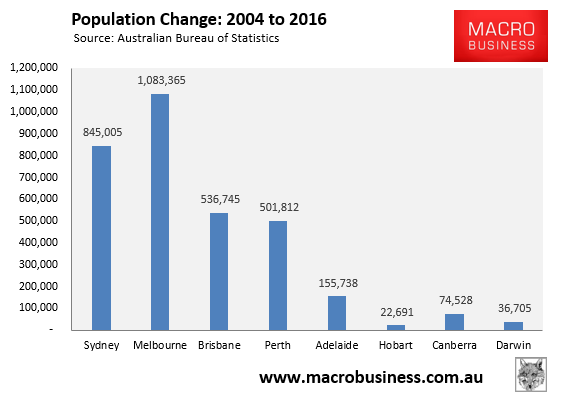
Moreover, Melbourne’s population is projected to expand by an insane 97,000 people per year (1,865 people per week) for the next 35 years, adding 3.4 million people (+73%) to the city’s population by 2051 – equivalent to 2.5 Adelaide’s:
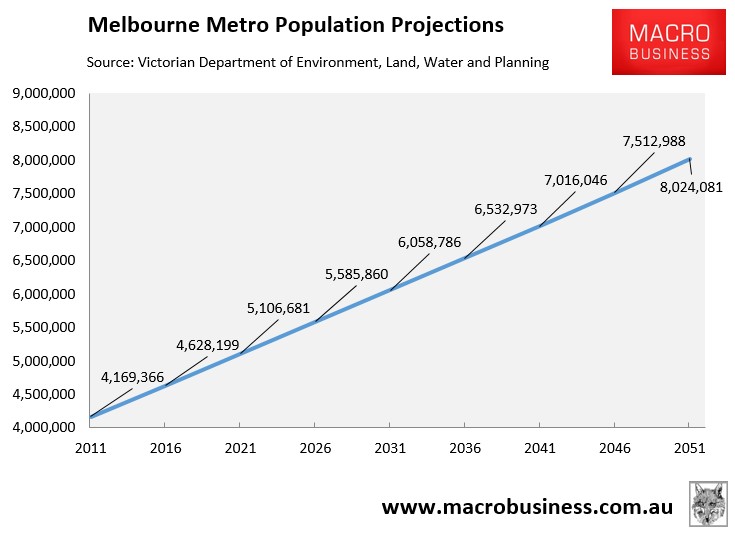
Sydney’s population is projected to expand by 87,000 people per year (77,000 via net overseas migration), adding more than 1.7 million people to the city’s population – equivalent to nearly 4.5 Canberra’s:
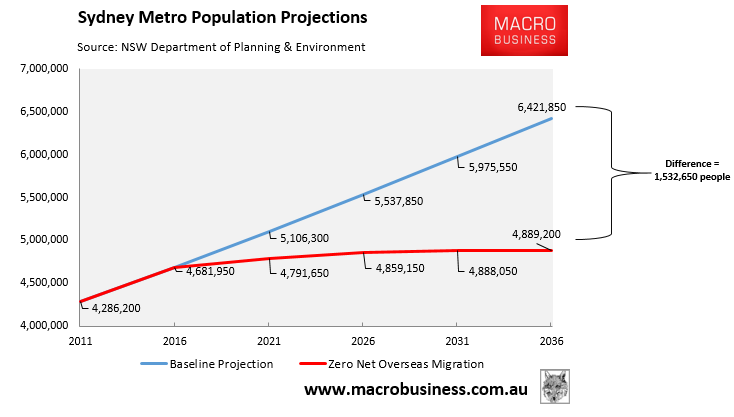
Whereas Brisbane’s population is projected to grow by 49,300 people per year (950 people per week) over the next 20 years – representing total population growth of just under 1 million people, which is the equivalent of 2.5 Canberra’s:
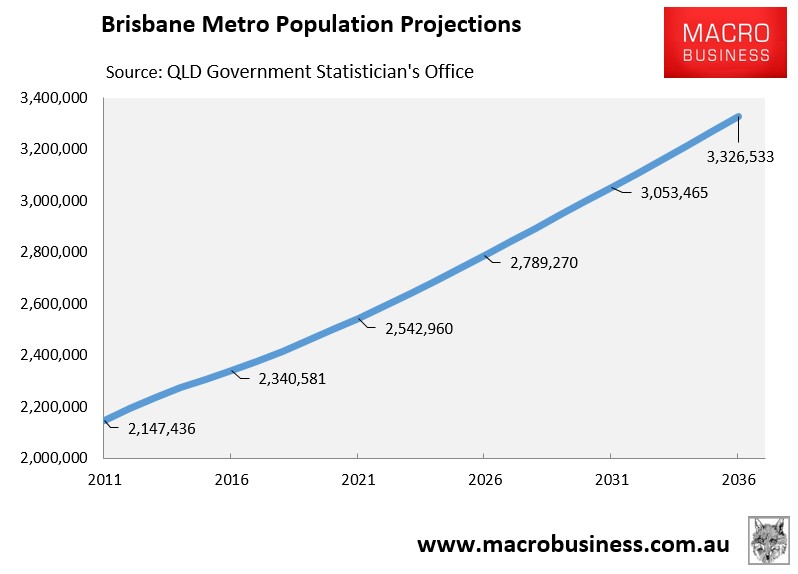
Clearly, the best and most cost effective way to relieve pressure on our cities’ water supplies and urban infrastructure is for the various state governments to lobby the federal government to slash Australia’s mass immigration program back to sensible levels:
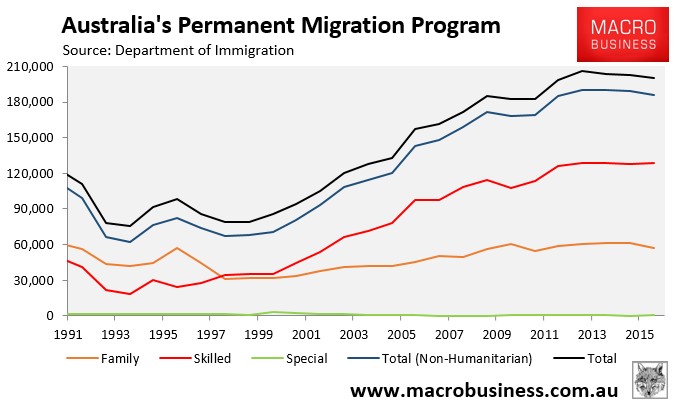
Because under the current mass immigration settings, expensive solutions like building more desalination plants will be required over and over again as rapid population growth continually outstrips supply.

